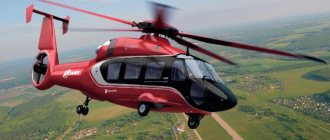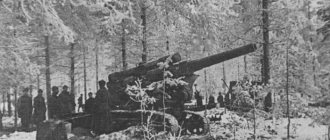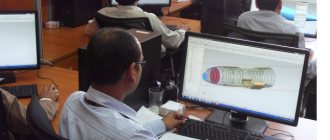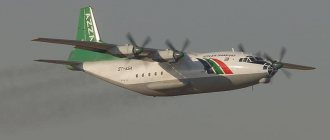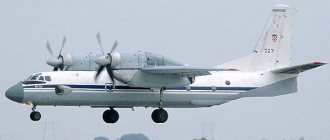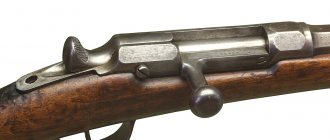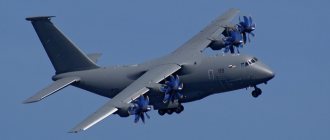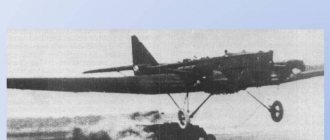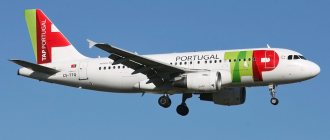95 years ago the first flight of the ANT-4 (TB-1) aircraft designed by Tupolev took place. Entering the troops under the TB-1 brand, it became one of the best aircraft in the world at that time. It was with the Tupolev bomber that Soviet strategic aviation began.
The biography of ANT-4 and TB-1 includes a record flight from Moscow to New York and the rescue of the Chelyuskinites, participation in the development of unmanned vehicles and the training of pilots for bomber squadrons. About the history of creation and records of the legendary Tupolev aircraft - in our material.
TB-1 (ANT-4) Dimensions. Engine. Weight. Story. Range of flight
The TB-1 (ANT-4) aircraft became the world's first all-metal heavy twin-engine monoplane bomber, a prototype for many subsequent multi-engine aircraft from the A.N. Tupolev. And the history of its creation is as follows: to carry out work carried out at the Special Technical Bureau for Military Inventions, a heavy aircraft was required that could be used to drop bombs, mines and torpedoes.
Bomber TB-1 (ANT-4) - video
At that time, our country did not yet have experience in creating such large machines, and they decided to place the order with the British, known to them. The British asked for 500 thousand rubles, a year and a half for the design and construction of an experimental machine. They refused the company's services: it was both expensive and time consuming. On July 9, 1924, TsAGI received a proposal to develop initial data for such an aircraft. The necessary calculations were carried out, according to which it turned out that it would be cheaper and faster to build a bomber on our own. A.N. Tupolev, who was entrusted with the design, promised to build the plane in 9 months and for 200 thousand rubles.
Design began on November 11, 1924. The new aircraft was supposed to be equipped with two Jupiter engines, but during the design they switched to more powerful Lyon engines with 450 hp each. Already during the design process, the military showed great interest in the vehicle. In April 1925, they sent TsAGI their technical requirements for the bomber. The Air Force decided to take into account the requirements for the ANT-4 when building a “backup”. Construction of the aircraft was completed on time, in exactly nine months. On November 25, 1925, he was accepted by a special commission. The next day, pilot A.I. Tomashevsky lifted the plane into the air. The tests were completed by the summer of 1926, and on July 10 the car was delivered to the customer.
In February 1928, the second copy of the ANT-4 aircraft was built taking into account all the requirements of the military. Compared to the prototype, the wing span and area of the wing were reduced, the forward part of the fuselage was changed, and machine guns and bomber weapons were installed. Tests of the TB-1 bomber began in July, they were conducted by test pilot M.M. Gromov. Serial production of the TB-1 was decided after testing the first prototype. Production vehicles were built with M-17 engines (licensed BMW-IV), they were produced in small series, and by the beginning of 1932, 216 copies were built, including 66 vehicles in the float version for naval aviation. The first TB-1s entered service with the Air Force in 1929 and were in service until 1936, and some even before the start of World War II.
In addition to the main version TB-1, the OKB developed several more modifications. The ANT-4 aircraft carried out several outstanding flights, among which the most famous was the flight of the “Country of Soviets” aircraft. From August 23 to November 1, a flight was made on the route Moscow - New York by a crew consisting of S.A. Shestakova, F.E. Bolotova, B.V. Sterligov and D.V. Fufaeva. In 141 hours 45 minutes of flight time, the plane flew 21,242 km - this was the first flight in history from the USSR to the USA. The plane set several world aviation records.
Over the years, various tests were carried out on TB-1 aircraft, including takeoff with starting powder boosters, testing of torpedo-throwing techniques, and the functions of an aerial tanker. On TB-1 in March 1934, pilot A.V. Lyapidevsky participated in the rescue of the Chelyuskinites and took all the women and children from the camp. After decommissioning from the Air Force, the aircraft were transferred to Aeroflot (with the name G-1), all weapons were removed from them, and they were used as transport aircraft for a long time. On freight lines, the vehicles had a colossal amount of time, were repaired several times and were used to the limit. One restored copy of the G-1 is in the Ulyanovsk Civil Aviation Museum.
The Russian Ministry of Defense will receive the first Tu-160M of a new construction in 2021 - the head of Tupolev
After deep modernization, it will enter service with the Ministry of Defense in 2022. In fact, it was built “from scratch,” as told by Alexander Konyukhov, head of the Tupolev Design Bureau. At the moment, the company has started ordering from the Ministry of Defense and is preparing a whole batch of Tu-160M. The contract assumes that the army will receive the first models after 2 years. Denis Manturov, who heads the Ministry of Industry and Trade, said that the first tests of the modernized Tu-160 will take place by the end of 2022.
Apparently, in parallel, the “White Swans”, which are currently serving in the Russian Aerospace Forces, will be updated. They will get the appearance of a Tu-160M. The military plans to receive the aircraft within the time frame previously agreed upon with the design bureau. According to representatives of the Ministry of Defense, all 16 strategic airborne aircraft are subject to modernization.
For the first time in the last 10 years, new missile carrier-bombers will be built at the Kazan Aviation Plant, which is a branch of the Tupolev design bureau. It is believed that the Tu-160 aircraft are one of the pillars of the nuclear triad owned by the Russian Federation. Visually, the new aircraft will differ little from the usual Tu-160. But after the work of the designers, its combat characteristics will be increased. For example, it is planned to expand the range of weapons.
Among the new products that will be used in the TU-160M, it is worth highlighting the innovative NK-32 power units. Thanks to the use of this series of engines, the maximum flight distance of a strategic bomber will increase by 1 thousand kilometers. At the end of January 2022, a cooperation agreement was concluded between the Russian Ministry of Defense and. The government contract involves the creation of the first batch of TU-160M aircraft, including ten aircraft. With the cost of one aircraft being 15 billion rubles, the Ministry of Defense plans to purchase 50 such aircraft.
Performance characteristics of TB-1 (ANT-4)
— Chief designer: A. N. Tupolev — First flight: November 26, 1925 — Start of operation: 1929 — End of operation: 1945 — Units produced: 212 (including 66 at plant No. 31)
Crew of TB-1 (ANT-4)
— 6 people
Dimensions TB-1 (ANT-4)
— Length: 18.0 m — Wingspan: 28.7 m — Height: 5.1 m — Wing area: 120 m²
Weight TB-1 (ANT-4)
— Empty weight: 4520 kg — Curb weight: 6810 kg — Normal take-off weight: 7750 kg
Engines TB-1 (ANT-4)
— Power plant: 2 × M-17 — Engine power: 2 × 680 hp (2 × 510 kW)
Speed TB-1 (ANT-4)
— Maximum speed: 207 km/h — Climbing rate: 169.8 m/min
Flight range of TB-1 (ANT-4)
— 1000 km
Practical ceiling TB-1 (ANT-4)
— 4830 m
Armament TB-1 (ANT-4)
— Small arms and cannon: three x 7.62 mm DA-2 machine guns — Combat load: 1000 kg
bNOPNYA N BNGLNFMNYARKH DUKEMETSN OPEKERYU MU Yumr-4MENDMNYYYURMN NAYASFDUKYA B zhutskh, MN KH'E B MYUVYUKE 1929 Ts. xMHZHYURNPNL GDEYAE BSHYARSOKHKN PSYNBNDYARBN nYANYUBHYUUHLYU. b YOOPEKE 1929 Ts. YANBER RPSDYU X NANPNMSH OPKHMЪK ONYARYUMNBKEMKHE ON NPTsYUMKHGYUZHHH OPEKERYU YANBERYAYNTSN YYULNKERYU B yayu. zhekh OPEYAKEDNBYUKHYAE B NYAMNBMNL VHYARN OPNOYUTSYUMDHYARAYHE.
dK OPEKERYU OPHYUGYUMN ASHKN ONDTSNRNBHRE NDHM HG OEPBSHU YEPKHIMSHU ra-1, ONKSVKHBKHI KHL "yaRPYUMYU YANBERNB"
. MN, SVKHRSHBUYU MEYANBEPEMYARBN REUMKHYKH RNTS BPELEMKH, OPEDSYALNRPEKH KH GUOYUYAMSCH LYUHMS, B YUVEYARBE YNRNPNI BSHIARSOKHK "DSAKEP". hLEMMN ELS YASFDEMN ASHKN DNAPUREYAY DN YULEPKHYKH.
mu ONYAOEMN HGZЪRNL HG mxx bbya YYULNKERE OPNBEKH YNMRPNKEMSHI OPEKER lNYAYBYU - nPEK - aPMYAY - lNYAYBYU, VRNASH SYARYUMNBKHRE HYARKHMMSHI PUYAUND TsNPCHVETSN.
ONYAINKEYS GMYUVHREKEMU VYUARE LYUPPSRY OEPEKERYU OPNKETSYUKYU MYUD LNPEL, PEHKH HYAONKEGNBURE ONOKYUBYNBNE YUYAYAH. b zhyutskh YAOPNEIRKHPNBUKH YPEOKEMKH DK SYARYUMNBYKH MU RA-1 ONOKYUBYNB NR MELEZHINTSN ANLAYUPKHPNBYKHYU chts-1. oPEDMYUGMYUVEMMYU DK OPEKERYU LYUKHMYU ╧ 603 (RN EYARE RPERE YEPKHIMYU), YPNLE SGKNB OND ONOKYUBYKH, NRKHVYUKYUYAE SYAKHKEMMSHLH KNMFEPNMYULH ZHEMRPNOKYUMYU, DBEP ЪЛХ B ТЧГЭКЪФЭ Х ДНОНКМХРЭКОМШЛХ AEMGHМНБШЛХ Х ЛУЯКМШЛХ АУИУЛХ. bNNPSPHEMHE MU MEI ME SYARYUMYUBKHBYUKNYAE, OPNELSH RSPECEY B UBNYARNBNI VYUYARKH GYUHKH. YaYULNKER ONKSVKHK BYAE ONKNFEMMNE SHKEIRPN-H PUDHNNANPSDNBYUMKHE (MU ANLAYUPDHPNBYHYUU OPEDSYALNRPEMMNE, MN PEYUKEMN NRYASRYARBNBUBIEE) X GMYuVKHREKEMNE YNKKHVEYARBN DNONKMHREK EMSHU OPKHANPNB KHMNYARPYUMMNTSN OPNKHGBNDYARBU.
YAPNY TSNRNBMNYARKH LYUKHMSH SYARYUMNBHKH 15 LYU, GYUREL YADBKHMSKH MU 26 KhChM. gYUDEPFYKH BSHGSHBYUKKHYAE NONGDYUMKHEL I ONDTSNRNBYNI VEPREFEY DNONKMHREKEMSHU AYUNB KH ONOKYUBINBNTSN YUYAYAKH. 22 KhChM ra-1 BSHBEGKKH MU YUSCHPNDPNL. nM YARYUK OEPBSHL YAEPHIMSHL YAYULNKERNL SCHRNTSN RHOYU. OPNAMSHI ONKER YANBEPHKKH 14 KhCHK. lNRNPSH OEPETSPEBUKHYAE. DEKN B RNL, VRN ONKERMSHI BEYA S PAINPDMNI LYUHMSH ASHK YASYYYARBEMMN ANKEYE, VELED S NOSHRMNTSN NAPYUGZHYU. b zhyutskh YAPNVMN YAOPNEYRKHPPNBUKH X HGTSNRNBHKH PUDHYURNPSH SBEKHVEMMNI OKNYYUDH. VEPEG ORRE DMEI KHU SFE YALNMRKHPNBUKH MU "YARPYUME YANBERNB".
schYHOYUF YANYARNK HG YNLYUMDHPYU ya.yu. ьЭЯРУНБУ (РНЦДУ КХВМНЦН ОКХНРИУ МУВУКМХИУ sbbya), BRNNTsN OHKNRYu i.e. aNKNRNBYU, LRSPLUMYU a.b. YaREPKKHTSNBU X ANPRLEUUMHYU d.b. tstuebyu. nR zhutskh ONDTsNRNBYNI OPEKERYU GUMKHLYUKYA b.l. oERKYNB. YaYULNKER DNAFEM ASHK OPNKERERE ONVRKH BYCH YARPIUMS, MU DYUKEMEL bNYARNYE YALEMHRE YNKEYAYU MU ONOKYUBYKH OPNDNKFKHRE OSRE BDNKE ONAEPEFE rKHUNTSN NYYUMYU. NYEYUM YANAKHPYUKHYAE OPEYAEVE B YAYULNL SGYNL LEYARE - VEPEG aEPKHMTSNB OPNKHB. DYUKEE LYUPPSR KEFYUK BDNKE BNYARNVMNTSN ONAEPEFEE yaEBEPMNI yuLEPHYKH, ONYAKE VETSN OKYUMKHPNBYUKNYAE OPEYAEVE yayu NR NYEYUMYU DN NYYUMYU.
pYYAYALYURPHBYUKHYAE X DBYU YUKEREPMYURKHBMSHU BYUPHYUMRYU: VEPEG eBPNOS X YaEBEPMSCH yURKYUMRKHYS X VEPEG gyUOYUDMSCH yuTPHYS X chFMSCH yuLEPHYS, MN XU YANVKH ANKEE YAKNFMSHLH . OPEDKYUTSYUKYA DUFE OPNEIR YPSTSNYABERMNTSN OPEKERYU, OPH YNRNPNL aEPKHMTSNB OPNKKHB OEPEYAYUKYAB NAPIURMSCH YARNPNMS (I yuKYAYKH). NYAMNBMSHL YUPTSSLEMRNL GYU BSHAPYUMMSHI LYUPPSR ASHKN OPNUNFDEMKHE ANKEYEI ETSN VYYARKH MYUD REPPHRNPKHEI yayap, VRN NAKETSVYUKN ONDTsNRNBYS.
b PUYAVERMSHE RNVYKH OPEKERYU GYUBEGKKH TSNPCHVEEE KH GYUOYUMSHE VYUYARKH. MUDN YAYYUGYURE, VRN HG-GYU BSHIANYNI ON REL BPELEMYUL YAREOEMKH YAFYURKH DBKHTSUREKH BMW VI PUANRYUKH ME MU VHYARNL AEMGHME, YU MU AEMGKHM-AEMGNKEMNI YALEYAKH, ЪБКЪБЕИЯ B RN BPEL PEDYNYARECH; AEMGNK KHLONPRKHPNBUKH XG TsEPLYUMXX.
8 YUBTSSYARYU 1929 Ts. MU ONDKERE Y SPYUKS "YARPYUMS YANBERNB" YURYUINBUK NPEK, B PEGSKERYURE MU OPEDMEI YPNLYE OPYUBNTSN YPSHKYU NYARYUKYUYAE GYULERMYU BLURKHMYU. dN yPYYUYAMNYYU DNAPYUKHYAE AEG NYNASHU OPNAKEL. MU BGKERE GUAYUPYUUKKHK LNRNP, MN BYAINPE NANPNRSH OPKHKKH B MNPLS. nVEPEDMYU ONYYUDYU OPEDONKYUTSYUKYUYAE B BEPUMESDHMYAYE, NDMUYN yeYARYUINB OPH ONDDEPFYE ANKNRNBYU OPKHMYK PEYEMHE KERERE DUKEYE, B vHRS. YaREPKHTSNB BNGPUYUFYUK, ONYAYNKEYS, ON PYUYAVERYUL, OPKHASHRE RSDU LNFMN ASHKN RNKEIN MNVECH. x NYUGYUKYA OPYUB - B RELMNRE SHYKHOYUF GYUAKSDHKYA. yNTsDU YANFTSKKH BEYAE AEMGHM, OPHKNYAE YYUDHREYA MU YAYKNME YANOYH. KERVKHYKH ME ONYARPUDUKH, MN LYUKHMY ASHKYU HYAINPEFEMYU.
b AKKHFUIEL YAEKE SGMYUKH, VRN MYUNDRYA B 80 YL NR VHRSH. ьEYARYUINB ONKSVKHK OPKHYUG YAPNVMN OPHASHRE B LNYAYBS KH ASHK NROPIUBKEM RSDU YAYULNKERNL. NYARYUKEMSHE EUYUKH ONEGDNL. mu BNYGYUKE KH BYARPERHK YNLYUMDHP, YANNAYKHBKHI: “tsNRNB DPSTSNI YAYULNKER, GYUBRPYU I PUYAYABERNL BSHKERUEL!”
NYARUERYA MEJAMSHL, ASHKKH KH NAE LYUKHMSH GYUPUMEE YADEKYUMSH BMEME KHDEMRKHVMSHLH, KKH “DSAKEP” YAOEMN DNBNDHKH, ONYU ONEGD EEK NR vKHRSH DN lNYAIBSH. bN BYAYNL YAKSVUE, MU TNRNTSPYUTKHU PYUGMKHZHSH LEFDS DBSL SHYGELOKPYULH "YARPYUMSH YANBERNB" YANBEPEMMN ME GYULERMN.
23 YUBTSSYARYU, SFE AEG NYANANI ONLOSH, YEYARYUNB I RNBUPHYYULH BMNBE BGK YSPYA MU BNYARNY. mYuD sPYUKNL GUYAANHK KEBSHI LNRNP, OPKHKNYAE YYUDHREYA B VEKAHMYAYE. gYU MNVE ETSN ONVKHMKKH, MN MU YUSCHPNDPNLE ME NYUGYUKNYAE AEMGHMYU. ONMYUDNAKHKYA MEGEYUOKYUMKHPNBYUMMSHI "YPCHY" B ySPTSYUM. vRNASH MYUBEPYURE TSPYUTHY, nLYAY OPNKEREKH X YAEKKH B mNBNYAHAKHPAYE. mu ONDUNDE Y hPYSRYAYS NRYYUGYUK NDHM DBHTSYUREKE - EKE DNRЪMSKH DN YUSCHPNDPNLYU. RPH DMЪ LEMKKH LNRNP, GYUREL ONKH DNFDH KH MHGYU NAKYUVMNYARE GYURMSKYU YANOYKH. tsPYUTHY KEREK YN BYAEL VEPRIL. mN "PNYNBSC" vHRS LHMNBYUKH AKYUTSNONKSVMN. b uYUAYUPNBYAYE YALEMHKKH YNKEYAYU MU ONOKYUBYKH. 9 YAEMRIAP OEPBSHI PYUG ONOPNANBYUKH BGKERERE I BNDSH. LYUKHMYU BGYUD X BOEPED MNYAHKYUYAE ON yuLSPS, MN ONDMHLUREYA B MEAN ME UNREKYU. kKH'E NYARYUBKHB MU AEPETSS VYUYARE YAMYUP'FEMHЪ X VYUYARKHVMN YAKHB TsNPCHVEE, 12 YAEMR'AP SCHYHOYUF YALNTs OPNDNKFHRE OSRE.
ONYAKE ONYYUDYKH B mHYNKYUEBYAYE-MU-YULSPE YAYULNKER MUOPYUBHKYA MU yULVYURYS, YU NRRSDU - MU N. YURRS (YUKESRYAYHE N-BY). bGKERS I YURRS LEYUKH PHTSH. YARNYBKHI B ASURE YNPYUAKE "YPYUYAMSHI BSHLOEK", ONDYARPYUUNBSHBYUBKHI OEPEKER, OPKHMK MU ANPR VYUARE TsPSGYU KH DBSU VKEMNB SHCHYHOYUFYU. mu NAKETSVEMMNI LYUHME NYARYUKHYAE aNKNRNB X yaREPCKHTsNB. VEPEG YAELE VYYANB NMH YAEKH S N. sMYUKYUYU. KERVKHYNB OEPEBEG MU AEPETS BNEMMSHY YUREP. MN BEPMSRAYA MU MEL NMH ME YALNTSKKH: MYUVYUKYA NRKHB, H YUREP NYUGYUKYA MU OYAYE. bSHPSVHKH LEYARMSHE PSHAYUYKH YAN YABNHLH KNDYULH.
mu YAKEDSCHYEL SHRYUOE ONTSNDYU HYAONPRHKYUYAE - Y YAHRUE ONDUNDHKH B RSLYUME H DNFDE. bDNAYUBNY HG-GYU OYUDEMKH DYUBKEMKH LYUYAKYU OPKHKNYAE NRYKCHVKHRE KEBSHY LNRNP. aNKNRNB OPHYUGYUK ONDURE YAHTSMYUK SOS, MN PUDHNYARYUMZHKH ME PUANRYUKYU - YYYSLSKORNP PUGPJDHKYA. gyu ANPR BSHAPNYAHKH BEYAE TsPSG, JNPE H YAKHKH VYUYARE AEMGHMYU, MN DN LEYARYU MYUGMYUVEMHYAE-RUYKH DNAPYUKHYAE. nR YAHRUKH SHCHYHOYUF NORE KEREK B ONKMNL YANYARYUBE.
mN DN YAHSHCHRKYU ME DNRJMSKH. KEBSHY DBKHTSUREKE EYE PUG NRYUGYUK. YaEKKH B OEPBNI ONOYUBIEIYA ASURE KH YARYUKH FDYURE, ONYU OPHBEGSR LNRNP. LEMYRE ETSN OPHKNYAE MU OKYUBS, ONRPYURKHB MU PELNMR 10 DMEI.
b YAKHSCHRKE "YARPYUMS YANBERNB" BYARPEVIUKH b.l. oERKYNB X LNRNPHYAR l.l. eTSNPNB. lUHMS OPEYARYUBHKH MU YNKEYAYU. bSHKEREKH AKYUTSNONKSVMN, MN DN YaYUM-tPYUMZHKHYAYN ME DNAPYUKHYAE - BSHYEK KH YARPN LNRNP (OPHVEL NO'RE KEBSHY). MU YUSCHPNDPNLE B ONPRKEMDE NOPEDEKKHKH, VRN YAKNLYUKYUYAE LYUYAKMYU ONLOYU. yuLEPHYUMZHSH EE ASHYARPN ONVHMHKH. b YaYUM-tPYUMZHHYAIN GYUDEPFYUKHYAE MEMYUDNKTSN, BYAINPE BGB YSPYA MU vHYUTSN. RUL YANBERYAYKHU KERVKHYNB BYARPEVIUKH I NPYEYARPNL OPH ANKENL YAYNOKEMHH MYUPNDU. DUKEIER OERKYINB KEREK MU YAYULNKERE. OPEKER GYUBEPHKH B mECH-INPYE.
b eBPNOS LYUKHMYU X ITS SCHIHOYUF BNGBPYUYUKKHYAE MU OYUPNUNDE “LYUBPHRYUMKH”.
VEPEG LEYAZH B LNYAIBE BYAEU SVYUYARMKHYNB OEPBNTSN OEPEKERYU YANBERYAYNTSN YYULNKERYU BY MYUTSPYUDHKH NPDEMYULH ANEBNTSN yPYUYAMNTSN GMYULEMH X ONVERMSHLH TsPYULNRYULH bzhy. cru:
| lNDHTHYUZHH | Yumr-4 |
| pYUGLUU YPSHKYU, L | 28.70 |
| dKKhMYu, L | 18.00 |
| bSHYANRYU, L | |
| OKNYYUDE YPSHKYU, L2 | 120.00 |
| I love it, JC | |
| OSYARNTSN YYULNKERYU | 4630 |
| LYUYAHLYUKEMYU BGKERMYU | 7928 |
| RNOKHBU | 2350 |
| RHO DBKHTSUREK | 2 od BMW-VI |
| lnymnyare, K.Ya. | 2 U 680 |
| LYUYAKHLYUKEMYYAINPNYARE, YL/V | 207 |
| yPEIYEPYAYU YAYNPNYARE , YL/V | 186 |
| oPUYRHVEYAYU DUKEMNYARE, YL | 1425 |
| YAYNPNONDZELMNYARE, L/LHM | 143 |
| oPUYIRKHVEYAYKHI ONRNNKNY, L | 3600 |
| schYHOYUF | 4 |
| bottom. KhMTNPLYUZHKH: |
| tNRNCPYUTHH: | yumr-4 "yaRPYUMYANBERNB" |
| yumr-4 "yaRPYUMYANBERNB" | |
| yumr-4 "yaRPYUMYANBERNB" | |
| yumr-4 "yaRPYUMYANBERNB" | |
| yumr-4 "yaRPYUMYANBERNB" | |
| yumr-4 "yaRPYUMYANBERNB" | |
| yumr-4 "yaRPYUMYANBERNB" | |
| yumr-4 "yaRPYUMYANBERNB" | |
| yumr-4 "yaRPYUMYANBERNB" | |
| yumr-4 "yaRPYUMYANBERNB" | |
| yumr-4 "yaRPYUMYANBERNB" | |
| yumr-4 "yaRPYUMYANBERNB" | |
| yumr-4 "yaRPYUMYANBERNB" | |
| yumr-4 "yaRPYUMYANBERNB" | |
| yUAKHMYU OKHKNRNB yumr-4 "yaRPYUMYU YANBERNB" |
IWELSH:
| Yumr-4 |
| IUELU OPEKERYU |
bYUPHYUMRSH NYPYYAYH:
| yumr-4 "yaRPYUMYANBERNB" |
| YaOHYANY HYARNVMKHYNB: |
| yuBHYYNKKEIZHH. b.pHTSLYUMR, b.jNREKEMKHYNB. rЪFEKSHI ANLAYUPDHPNBYKHY ra-1 LYUYYAHLHKHYUM YYUSYYE. yaYULNKERSH rSONKEBU. yumr-1 - yumr-15 c.t. oERPNB. TsKHDPNYULNKERSH SHCHYPYUMNOKYUMSH pNYAYAHH 1910-1999 yuBPNB b.a. KHYARNPKH YNMYARPSYZHKHI YAYULNKERNB B yayap DN 1938 Ts. YAHLYUNB a.k. YaYULNKERSH YARPIUMSH YANBERNB. 1917-1970 YaYULNKERSH YARPIUMSH YANBERNB |
sTSNKNY MEAYU. 2018


